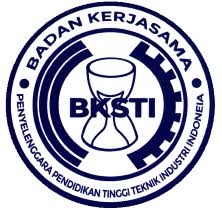Pengukuran Tingkat Kualitas Pelayanan Pit-Stop Kopi Gresik
DOI:
https://doi.org/10.30656/intech.v5i1.1453Keywords:
IPA, PGCV, Quality, ServqualAbstract
Coffee Pit Stop is one of the coffee shops in the city of Gresik, with its segmentation of consumers being middle and lower markets at prices that are very affordable for every community. Based on the initial survey, some complaints were felt by the customer, including seating for only one person so that if they came together with a large number they had to adjust their place first, the service was less representative; the taste variants were limit to each menu offered. This study aims to measure customer satisfaction by using the Servqual, IPA, and PGCV method with 100 respondents. The results showed that there were three attributes in quadrant A namely P4 very complete support facilities with PGCV values of 5.99, P5 wide and safe parking area with a PGCV value of 5.54, P10 immediately providing the right service according to customer desires with amount PGCV is 5.50. The corrective action taken to improve service quality is to carry out routine cleaning of the supporting facilities owned by Gresik Pit Stop. Suitable parking arrangements by parking officers must always consider so that the effectiveness of land use can be maximized, and the waiter must pay attention to the accuracy and speed in serving customers so that customer satisfaction will be creating.
Downloads
References
Darmawan, A., Mulyadi, M., & Busri, N. K. (2014). Analisis Kepuasan Pelanggan Terhadap Layanan Purna Jual Avanza Dengan Metode Servqual Dan PGCV (Studi Kasus BPPT Hadji Kalla Cabang Urip Makassar). Jemis.Ub.Ac.Id, 2(2), 12–19.
Devani, V., & Rizko, R. A. (2016). Metode Customer Satisfaction Index ( CSI ) Dan Potential Gain in Customer Value ( PGCV ). Jurnal Rekayasa Dan Manajemen Sistem Informasi, 2(2), 24–29.
Erni, N., Sriwana, I. K., & Yolanda, W. T. (2014). Peningkatan Kualitas Pelayanan dengan Metode Servqual dan TRIZ. Jurnal Ilmiah Teknik Industri, 2(2), 92–100.
Jalal, R. A., & Jayamandau, I. (2016). Analisis Tingkat Kualitas Pelayanan Dengan Mengintegrasikan Metode Service Quality Ke Dalam Metode Importance And Performance Analysis (Studi Kasus : Cha - Cha Milk Tea). Teknoin, 22(1), 637–647.
Nuryani, A. R. P., Santoso, I., & Deoranto, P. (2014). Analisis Kualitas Pelayanan Terhadap Kepuasan Konsumen Dengan Metode Servqual ( Studi Kasus di Ria Djenaka Coffee House & Resto , Malang ). Ftp Unbraw, (Quadrant I), 1–8.
Ranitaswari, P. A., Mulyani, S., & Sadyasma, C. A. B. (2018). Analisis Kepuasan Konsumen Terhadap Kualitas Produk Kopi Dan Kualitas Pelayanan Menggunakan Metode Importance Perfomance Analysis (Studi Kasus Di Geo Coffee). Rekayasa Dan Manajemen Agroindustri, 6(2), 147–157.
Sukwadi, R. (2014). Penentuan Prioritas Perbaikan Kualitas Layanan TransJakarta dengan Menggunakan Metode IPA-PGCV. Jurnal Rekayasa Sistem Industri, 5(2), 64–69.
Supranto, J. (2006). Pengukuran Tingkat Kepuasan Pelanggan Untuk Menaikkan Pangsa Pasar. Jakarta: Rineka Cipta.
Suyitno, A., & Sudarso, I. (2019). Desain Peningkatan Kepuasan Pelanggan Dengan Pendekatan Metode Servqual dan IPA Di Underpass Cafe. Seminar Nasional Inovasi Dan Aplikasi Teknologi Di Industri 2019, 137–141. Malang: SENIATI 2019 – Institut Teknologi Nasional Malang.
Tjiptono, F. (2008). Service Management Mewujudkan Layanan Prima. Yogyakarta: Andi.
Wicaksono, B., Setyanto, N. W., & Oktavianty, O. (2014). Analisis Kepuasan Pelanggan Pada Pelayanan Kesehatan Dengan Menggunakan Metode Potential Gain in Customer Value (PGCV) Dan Entropy (Studi Kasus: Rumah Sakit Mardi Waluyo Kota Blitar). Jurnal Rekayasa Dan Manajemen Sistem Industri, 2(3), 637-647.
Winarno, H., & Absror, T. (2017). Analisis Kualitas Pelayanan Dengan Metode Service Quality ( Servqual ) Dan Importance Performance Analysis ( Ipa ). Jurnal Manajemen Industri Dan Logistik, 1(2), 67–79.
Widyarto, W. O., Djamal, N., & Adhim, F. (2018). Analisis Kualitas Pelayanan Publik dengan Metode Fuzzy-Service Quality (F-Servqual) dan Index Potential Gain Customer Value (IPGCV). Jurnal Sistem dan Manajemen Industri, 2(2), 101-110.








.png)
.png)
.png)



.png)

.png)
